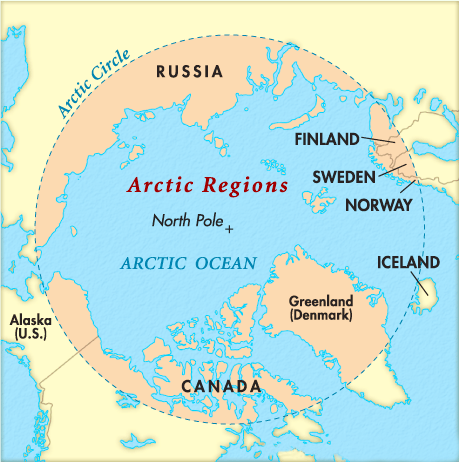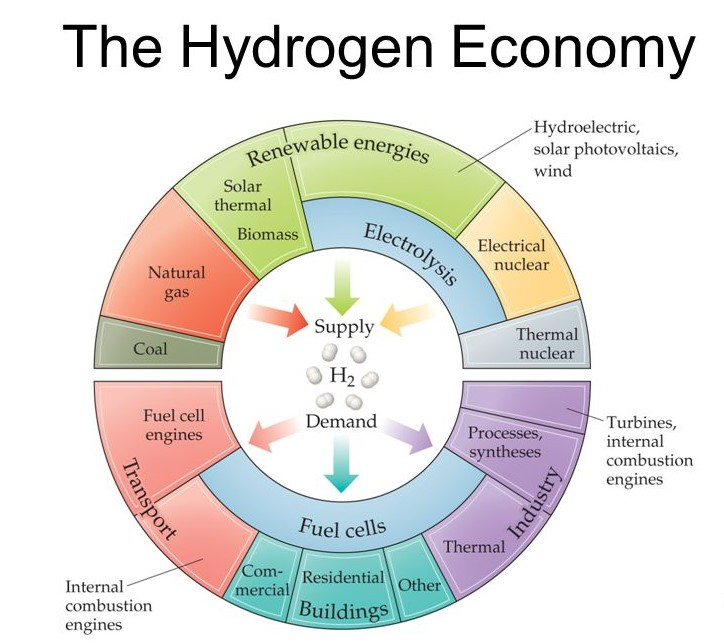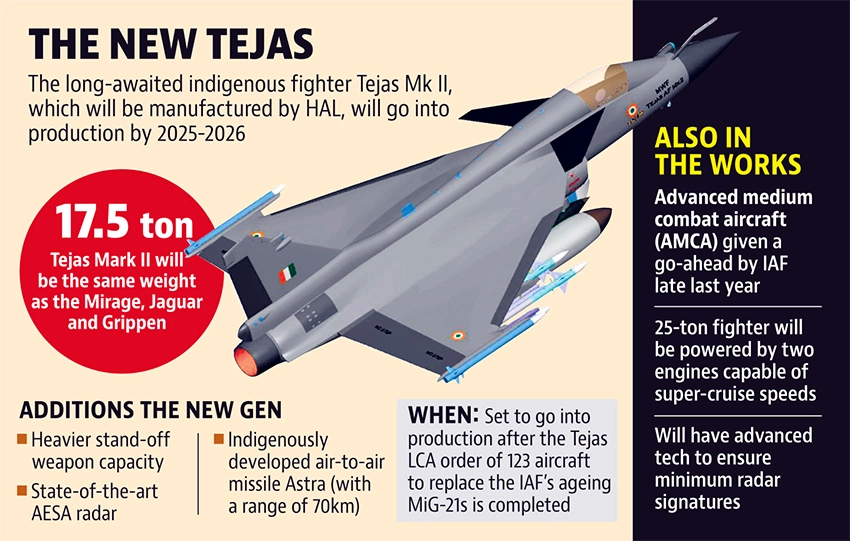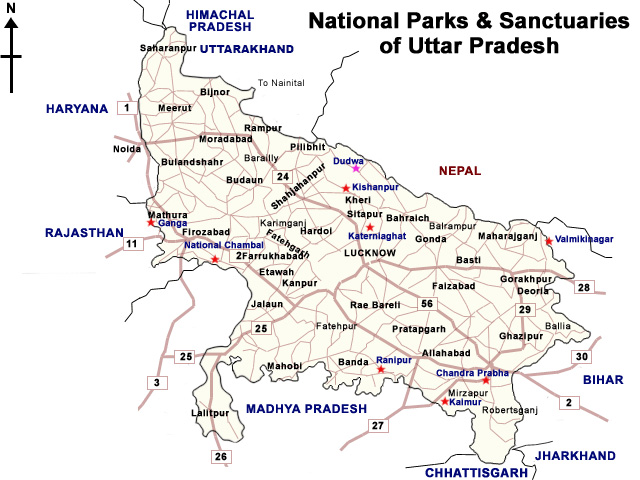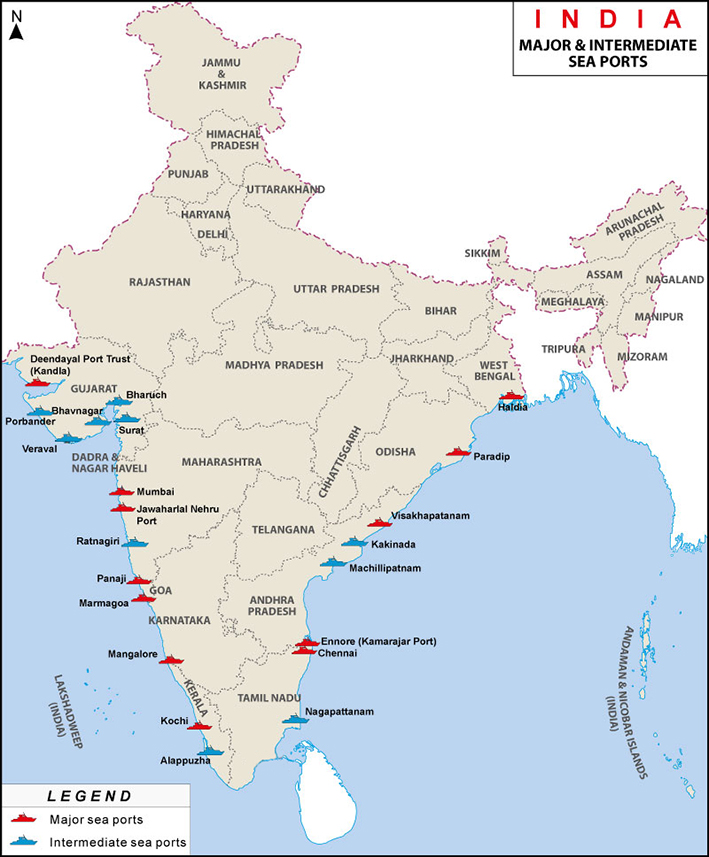Science & Technology
Robots in Warfare
Why in News
Recently, Israel Aerospace Industries unveiled a remote-controlled armed robot ‘REX MKII’, which can patrol battle zones, track infiltrators and open fire.
- The use of robots in the war involves dealing with ethical dilemmas.
- The proponents say that such semi-autonomous machines allow armies to protect their soldiers, while critics fear this marks another dangerous step toward robots making life-or-death decisions.
Key Points
- About the REX MKII:
- The robot can gather intelligence for ground troops, carry injured soldiers and supplies in and out of battle, and strike nearby targets.
- The Israeli military is currently using a smaller but similar vehicle called the Jaguar to patrol the border with the Gaza Strip.
- Unmanned ground vehicles are being increasingly used by other armies, including those of the United States, Britain and Russia.
- Their tasks include logistical support, the removal of mines and firing weapons.
- An alternative Smart Wall has been proposed to replace the physical and armed patrolling with advanced surveillance technology at the USA-Mexico border.
- Arguments in Favour of Use of Robots in War:
- No Physiological Limitations: Autonomous robots, because they are not physiologically limited, can operate without sleep or food, perceive things that people do not, and move in ways that humans cannot.
- The use of a broad range of robotic sensors is better equipped for battlefield observations than human sensory abilities.
- Operational Benefits to the Military: The robots provide following benefits: faster, cheaper, better mission accomplishment; longer range, greater persistence, longer endurance, higher precision; faster target engagement; and immunity to chemical and biological weapons.
- Ability to Act Conservatively: Robots do not need to protect themselves in cases of low certainty of target identification.
- Autonomous armed robotic vehicles do not need to have self-preservation as a foremost drive, if at all.
- They can be used in a self-sacrificing manner if needed and appropriate, without reservation by a commanding officer.
- Minimising Loss of Human Life: Reducing loss of human lives forms one of the core principles of ethics of war, which can be accomplished by the use of the robots.
- No Physiological Limitations: Autonomous robots, because they are not physiologically limited, can operate without sleep or food, perceive things that people do not, and move in ways that humans cannot.
- Arguments Against the Use of Robots in War:
- Lowering Threshold of Entry into War: The use of robot soldiers will cheapen the cost of war, making future wars more likely.
- The threshold of entry into warfare may be lowered as we will now be risking machines and fewer human soldiers.
- This could violate the conditions of just warfare.
- Errors in Targeting: Such weapons are worrisome because they can’t be trusted to distinguish between combatants and civilians or make proper calls about the harm attacks may do to nearby civilians.
- Ignoring Conventions of War: Machines cannot understand the value of human life, which in essence undermines human dignity and violates human rights laws.
- Therefore, machines are likely to commit atrocities and violate the basic rules of war like the Hague Conventions, and other declarations delimiting how a war should be fought.
- Persistent Risks: There will always be risks like proliferation of the technology to other nations and terrorists.
- Also, the robotic machines are prone to cyber-security attacks or hacking and they can be used against their own people.
- Lowering Threshold of Entry into War: The use of robot soldiers will cheapen the cost of war, making future wars more likely.
- Security Management in India:
- CIBMS Project: The Indian government has been pushing for technological solutions through the Comprehensive Integrated Border Management System (CIBMS) project. The purpose is to integrate technology with the existing systems to facilitate better detection and interception by the man behind the machine.
- National Counter Rogue Drones Guidelines 2019: To deal with possible security challenges from rogue drones to key installations like nuclear power plants and military bases.
Way Forward
- Technological revolution propelled by Artificial Intelligence, Machine learning, etc, is the need of the hour to enhance efficiency, productivity and optimization across industries and sectors.
- However, before deployment of robotics into warfare, thorough research needs to be done, so that opportunities can be maximized while keeping the humanitarian loss at the minimum.
Biodiversity & Environment
Impact of Global Warming on Permafrost
Why in News
According to the latest IPCC report, increasing global warming will result in reductions in Arctic permafrost and the thawing of the ground is expected to release greenhouse gases like methane and carbon dioxide.
Key Points
- Permafrost:
- Permafrost is any ground that remains completely frozen - 32°F (0°C) or colder - for at least two years straight.
- These permanently frozen grounds are most common in regions with high mountains and in Earth’s higher latitudes - near the North and South Poles.
- Permafrost covers about 15% of the land area of the globe.
- Although the ground is frozen, permafrost regions are not always covered in snow.
- Landscapes with large stretches of permafrost are often called tundra. The word tundra is a Finnish word referring to a treeless plain. Tundra is found at high latitudes and at high altitudes, where the permafrost has a very thin active layer.
- Concerns Regarding Melting Permafrost:
- Affects Infrastructure:
- It will affect countries where roads or buildings were constructed on permafrost.
- Release of Greenhouse Gases:
- It entombed and froze the organic material in the ground.
- If the ground begins to thaw, this material will become available for microorganisms to break down.
- In some environments, the microorganisms will release carbon dioxide, and in others release methane which is about 25 to 30 times more potent as a greenhouse gas than carbon dioxide.
- Change from Carbon Storehouse to Carbon Emitters:
- Some permafrost regions have changed from being a carbon storehouse to being places that are net emitters of carbon.
- Increase in the Number of Forest Fires:
- This year Russia witnessed a forest fire whose total area was the size of Portugal. Usually, after a fire, one expects the forest to grow back in the next 50 years to 60 years. This restores the carbon stock in the ecosystem.
- But in the tundra, the peat is where the organic material is and this takes a very long time to accumulate. So if peat is burned and released into the atmosphere, then it will take centuries to restore that carbon stock at ground level.
- Releasing New Bacteria or Viruses:
- The environment now is so much more suitable than during the Ice Age for not just human life, but also the evolution or development of viruses and bacteria.
- So, the chances of emerging new bacteria or viruses cannot be ignored.
- Affects Infrastructure:
- Steps to be Taken:
- Stop Rapid Climate Change: In order to curtail climate change and save the permafrost, it is indispensable that global CO2 emissions be reduced by 45% over the next decade, and that they fall to zero after 2050.
- Slow Down Erosion: The scientific journal Nature suggested building a 100-metre-long dam in front of the Jakobshavn glacier (Greenland), the worst affected by Arctic melting, to contain its erosion.
- Combine Artificial Icebergs: Indonesian architect has won an award for his project Refreeze the Arctic, which consists of collecting water from melted glaciers, desalinating it and refreezing it to create large hexagonal ice blocks.
- Increase Their Thickness: Some researchers propose a solution to manufacture more ice. Their proposal consists of collecting ice from below the glacier through pumps driven by wind power to spread it over the upper ice caps, so that it will freeze, thus strengthening the consistency.
- People’s Awareness: The tundra and the permafrost beneath it may seem far away, but no matter where we live, the everyday choices we make contribute to climate change.
- By reducing our carbon footprint, investing in energy-efficient products, and supporting climate-friendly businesses, legislation, and policies, we can help preserve the world’s permafrost and avert a vicious cycle of an ever-warming planet.
International Relations
Climate Action and Finance Mobilisation Dialogue: India-US
Why in News
Recently, US Special Presidential Envoy for Climate, along with India’s Union Minister for Environment, Forests and Climate Change launched the Climate Action and Finance Mobilisation Dialogue (CAFMD) between the two countries.
- India has so far abstained from committing to a net zero goal but is on a climate pathway that is compatible with keeping global temperatures to below 2 degree celsius by the end of the century.
Key Points
- About:
- It is one of the two tracks of the India-US Climate and Clean Energy Agenda 2030 partnership launched at the Leaders' Summit on Climate in April 2021.
- Earlier, the revamped US-India Strategic Clean Energy Partnership SCEP (first track) was launched.
- It will provide both countries an opportunity to renew collaborations on climate change while addressing financing aspects and deliver climate finances primarily as grants and concessional finance as envisaged under the Paris Agreement.
- It will also help to demonstrate how the world can align swift climate action with inclusive and resilient economic development, taking into account national circumstances and sustainable development priorities.
- It is one of the two tracks of the India-US Climate and Clean Energy Agenda 2030 partnership launched at the Leaders' Summit on Climate in April 2021.
- Pillars to the CAFM:
- Climate Action Pillar:
- It would have joint proposals looking at ways in which emissions could be reduced in the next decade.
- Finance Pillar:
- Through this the US will collaborate in attracting capital and enhancing the enabling environment to deploy 450 GW of renewable energy capacity in India and demonstrate and scale innovative clean energy technologies and promote bilateral clean energy investment and trade.
- Adaptation and Resilience:
- The two countries will collaborate in building capacities to “measure and manage climate risks”.
- Climate Action Pillar:
- Opportunities for India:
- There’s never been a better time to invest in the energy transition. Renewable energy is cheaper than ever.
- In fact, it is cheaper to build a solar farm in India than anywhere else on the planet.
- Investors are now moving to clean energy all around the world and the energy transition is already rebounding after the worst of the pandemic and is now on track to smash the pre-pandemic record of 8.4 billion USD invested in one year.
- The International Energy Agency forecasts that if India seizes the clean energy opportunity, it could become the world’s largest market for batteries and solar panels.
- Currently India's installed power capacity is projected to be 476 GW by 2021-22 and is expected to rise to at least 817 GW by 2030.
Indian Economy
T+1 Settlement System for Shares: SEBI
Why in News
Recently, Securities and Exchange Board of India (SEBI) allowed stock exchanges to start the T+1 system as an option in place of T+2 for completion of share transactions.
- It has been introduced on an optional basis in a move to enhance liquidity.
- SEBI is a statutory body established in 1992 in accordance with the provisions of the Securities and Exchange Board of India Act, 1992.
Settlement System
- In the securities industry, the trade settlement period refers to the time between the trade date that an order is executed in the market and the settlement date when a trade is considered final.
- On the last day of the settlement period, the buyer becomes the holder of record of the security.
Key Points
- About:
- If the stock exchange opts for the T+1 settlement cycle for a scrip, it will have to mandatorily continue with it for a minimum 6 months.
- A scrip is a substitute or alternative to legal tender that entitles the bearer to receive something in return.
- Thereafter, if it intends to switch back to T+2, it will do so by giving one month’s advance notice to the market. Any subsequent switch (from T+1 to T+2 or vice versa) will be subject to a minimum period.
- If the stock exchange opts for the T+1 settlement cycle for a scrip, it will have to mandatorily continue with it for a minimum 6 months.
- T+1 vs T+2 Settlement:
- In T+2, if an investor sells shares, the settlement of the trade takes place in two working days (T+2) and the broker who handles the trade will get the money on the third day, but will credit the amount in the investor’s account only by the fourth day.
- In effect, the investor will get the money only after three days.
- In T+1, settlement of the trade takes place in one working day and the investor will get the money on the following day.
- The move to T+1 will not require large operational or technical changes by market participants, nor will it cause fragmentation and risk to the core clearance and settlement ecosystem.
- In T+2, if an investor sells shares, the settlement of the trade takes place in two working days (T+2) and the broker who handles the trade will get the money on the third day, but will credit the amount in the investor’s account only by the fourth day.
- Benefits of T+1 Settlement:
- Reduced Settlement Time: A shortened cycle not only reduces settlement time but also reduces and frees up the capital required to collateralise that risk.
- Reduction in Unsettled Trade: It also reduces the number of outstanding unsettled trades at any instant, and thus decreases the unsettled exposure to Clearing Corporation by 50%.
- The narrower the settlement cycle, the narrower the time window for a counterparty insolvency/bankruptcy to impact the settlement of a trade.
- Reduction in Blocked Capital: Further, the capital blocked in the system to cover the risk of trades will get proportionately reduced with the number of outstanding unsettled trades at any point of time.
- Reduction in Systemic Risks: A shortened settlement cycle will help in reducing systemic risk.
- Concerns of Foriegn Investors:
- Foreign investors have concerns about operational issues they would face while operating from different geographies - time zones, information flow process, and foreign exchange problems.
- They will also find it difficult to hedge their net India exposure in dollar terms at the end of the day under the T+1 system.
Indian Economy
IRDAI (Trade Credit Insurance) Guidelines, 2021
Why in News
Recently, the Insurance Regulatory and Development Authority of India (IRDAI) has issued revised guidelines for trade credit insurance.
Key Points
- Trade Credit Insurance:
- About:
- Trade credit insurance protects businesses against the risk of non-payment for goods and services.
- It usually covers a portfolio of buyers and indemnifies an agreed percentage of an invoice or invoices that remain unpaid as a result of protracted default or insolvency.
- It contributes to the economic growth of a country by facilitating trade and helps improve economic stability by addressing trade losses because of payment risks.
- Coverage:
- It can be issued to sellers or suppliers of goods or services, factoring companies as defined in the Factoring Regulation Act, 2011 and banks and financial institutions.
- For banks and financial institutions and factoring companies, it covers the loss on account of non-receipt of payment from a buyer, due to commercial or political risks, against the bills and invoices purchased or discounted.
- Commercial risks include insolvency or extended default of the buyer, rejection by the buyer after delivery subject to conditions of contract, and rejection before shipment and non-receipt of payment on account of the collecting bank’s failure.
- Political risk cover is available only in case of buyers outside India and will include occurrence of war between the buyer’s country and India and also war, hostilities, civil war, rebellion, revolution, insurrection or other disturbances in the buyer’s country.
- About:
- Applicability:
- These guidelines will apply to all insurers transacting general insurance business, registered under the Insurance Act, 1938.
- However, ECGC Ltd (formerly Export Credit Guarantee Corporation of India Ltd) is exempted from the application of these guidelines.
- Benefits of the Move:
- It will facilitate general insurance companies to help businesses manage country risk, open up access to new markets and manage non-payment risk associated with trade financing portfolios.
- It will also enable general insurance companies to offer trade credit insurance with customised covers to improve businesses for the Micro, Small and Medium Enterprises (MSMEs), considering the evolving insurance risk needs of these enterprises.
Governance
Task Force for Coal-Based Hydrogen Production
Why in News
Recently, the Union Government constituted a Task force and Expert committee to prepare a road map for coal-based hydrogen production (Black Hydrogen).
- The Task Force is also responsible for coordination with the Coal Gasification Mission and NITI Aayog.
Key Points
- Coal-Based Hydrogen Production:
- About:
- Coal (one of the Hydrocarbon Fuels) is one of the important sources of hydrogen making apart from natural gas and renewable energy through Electrolysis.
- However, Coal has not been encouraged in hydrogen production because of the fear of Carbon Emission while extracting hydrogen via coal.
- Almost 100% of hydrogen produced in India is through natural gas (Grey Hydrogen).
- Benefit:
- Cost of hydrogen produced from coal can be cheaper and less sensitive to imports.
- Challenge:
- Production of hydrogen from coal will have challenges in terms of high emissions and CCUS (Carbon capture, utilisation and storage) will play an important role.
- Carbon monoxide and carbon dioxide formed during the coal to hydrogen process have to be trapped and stored in an environmentally sustainable manner (CCS and CCUS).
- Production of hydrogen from coal will have challenges in terms of high emissions and CCUS (Carbon capture, utilisation and storage) will play an important role.
- About:
- Hydrogen Economy:
- It is an economy that relies on hydrogen as the commercial fuel that would deliver a substantial fraction of a nation’s energy and services.
- Hydrogen is a zero-carbon fuel and is considered an alternative to fuel and a key source of clean energy. It can be produced from renewable sources of energy such as solar and wind.
- It is an envisioned future where hydrogen is used as fuel for vehicles, energy storage and long-distance transport of energy. The different pathways to use hydrogen economy includes hydrogen production, storage, transport and utilization.
- In 1970, the term 'Hydrogen Economy' was coined by John Bockris. He mentioned that a hydrogen economy can replace the current hydrocarbon-based economy, leading to a cleaner environment.
- Present Scenario:
- The current global demand for hydrogen is 70 million metric tons, most of which is being produced from fossil fuels- 76% from natural gas and 23% from coal and remaining from the electrolysis of water-- consumes 6% of the global natural gas and 2% of the global coal.
- This results in CO2 emissions of around 830Mt/year out of which only 130Mt/year is being captured and used in the fertilizer industry.
- Currently, much of the hydrogen produced is used for oil refining (33%), ammonia (27%), methanol production (11%), steel production (3%) and others.
- The current global demand for hydrogen is 70 million metric tons, most of which is being produced from fossil fuels- 76% from natural gas and 23% from coal and remaining from the electrolysis of water-- consumes 6% of the global natural gas and 2% of the global coal.
- Related Initiatives:
Internal Security
LCA-Mk2 and AMCA
Why in News
According to the Aeronautical Development Agency (ADA), LCA Tejas-Mk2 will be rolled out in 2022 and the first flight in early 2023. Advanced Medium Combat Aircraft (AMCA) will be rolled out in 2024 and first flight in 2025.
- Simultaneously, the project for development of a twin-engine deck-based fighter jet meant to fly from the Navy’s aircraft carriers is also making progress.
- ADA is an autonomous body of the Ministry of Defence.
Key Points
- LCA-Mk2:
- It is a 4.5 generation aircraft which will be used by the Indian Air Force.
- It is a replacement for the Mirage 2000 class of aircraft.
- It has got a bigger engine and can carry 6.5 tonnes of payload.
- The technology is already developed in Light Combat Aircraft (LCA).
- The LCA programme began in the 1980s to replace India's ageing MiG-21 fighters.
- The LCA is being designed and developed with ADA as the nodal agency and State-owned Hindustan Aeronautics Limited (HAL) being the principal partner.
- Its production is likely to start somewhere around 2025.
Variants of Tejas
- Tejas Trainer: 2-seater operational conversion trainer for training air force pilots.
- LCA Navy: Twin- and single-seat carrier-capable for the Indian Navy.
- LCA Tejas Navy MK2: This is phase 2 of the LCA Navy variant.
- LCA Tejas Mk-1A: This is an improvement over the LCA Tejas Mk1 with a higher thrust engine (Air Force).
- LCA Tejas Mk-2: Following the Mk-1A is the Mk-2 which will provide a high degree of manoeuverability.
- Advanced Medium Combat Aircraft (AMCA):
- About:
- It is a fifth generation aircraft. And will be used by the Indian Air Force.
- It is a stealth aircraft, i.e. designed for stealth and unlike the LCA, which is designed for maneuverability.
- It has a unique shape to achieve low radar cross-section and has an internal carriage of weapons.
- When the external weapons are removed, this aircraft has enough fuel and weapons inside to do a very capable operational role in stealth mode.
- Range:
- Over 1,000 km up to 3,000 km in different modes.
- Variants and Engine:
- It has two variants Mk-1 and Mk-2, While AMCA Mk-1 will have an imported engine, same as LCA Mk-2, the AMCA Mk-2 will have an indigenous engine.
- Manufacturing:
- The manufacturing and production of the aircraft will be through a Special Purpose Vehicle (SPV), which will also have participation of private industry.
- About:
Important Facts For Prelims
Pilibhit Tiger Reserve: Uttar Pradesh
Why in News
Recently, a herd of Elephants from Shuklaphanta National Park reached the Pilibhit Tiger Reserve (Uttar Pradesh) and damaged crops of farmers.
- The Shuklaphanta National Park is a protected area in the Terai of the Far-Western Region, Nepal.
Key Points
- About:
- It is located in Pilibhit district, Lakhimpur Kheri District and Bahraich District of Uttar Pradesh.
- It was designated as a Tiger Reserve in 2014 and was India’s 45th Tiger Reserve Project.
- In 2020, it bagged the International Award TX2 for doubling up the number of tigers in the past four years.
- It forms part of Terai Arc Landscape in the upper Gangetic Plain. The northern edge of the reserve lies along the Indo-Nepal border while the southern boundary is marked by the river Sharada and Khakra.
- Corridor Linkages:
- Pilibhit is an important habitat for tigers owing to its connection with several tiger habitats within the State and outside. They are used by tigers and other wild animals.
- The important linkages are:
- Flora and Fauna:
- It is home to a habitat for over 127 animals, 326 bird species and 2,100 flowering plants.
- Wild animals include tiger, swamp deer, bengal florican, leopard, etc.
- It has high sal forests, plantations and grasslands with several water bodies.
Terai Arc Landscape
- It is an 810 km stretch between the river Yamuna in the west and the river Bhagmati in the east.
- It is spread across the Indian states of Uttarakhand, Uttar Pradesh and Bihar, and the low lying hills of Nepal.
- It boasts of some of India’s most well-known Tiger Reserves and Protected Areas such as Corbett Tiger Reserve (Uttarakhand), Rajaji National Park (Uttarakhand), Dudhwa Tiger Reserve (Uttar Pradesh), Valmiki Tiger Reserve (Bihar).
- The forests are home to three flagship species, the Bengal tiger (Panthera tigris), the greater one horned rhino (Rhinoceros unicornis) and the Asian elephant (Elephas maximus).
Important Facts For Prelims
Mobile X-Ray Container Scanning System: Paradip Port
Why in News
Recently, a Mobile X-Ray Container Scanning System (MXCS) has been installed by Paradip Port near the PICT (Paradeep International Cargo Terminal) Terminal.
Key Points
- About:
- It has been installed under the Ease of Doing Business (EoDB) initiative for the purpose of reducing physical examination and dwell time of containers at the Port.
- It will facilitate movement of unshredded metallic scrap materials in containers through the Port to meet the long standing requirement of hinterland Industries.
- Significance:
- It is expected to boost the container volume at Paradip Port and will reduce the logistic cost and help the EXIM (Export-Import) trade.
- Paradip Port:
- It is a natural, deep-water port on the East coast of India, situated at the confluence of the Mahanadi river and the Bay of Bengal, in Odisha.
- Located 210 nautical miles south of Kolkata and 260 nautical miles north of Visakhapatnam.
- It is administered by the Paradip Port Trust (PPT), administering under the Major Port Trusts Act, 1963 functioning under the Ministry of Ports, Shipping and Waterways.
- PPT was commissioned in 1966 as a mono commodity port for export of iron ore.
- It is a natural, deep-water port on the East coast of India, situated at the confluence of the Mahanadi river and the Bay of Bengal, in Odisha.

